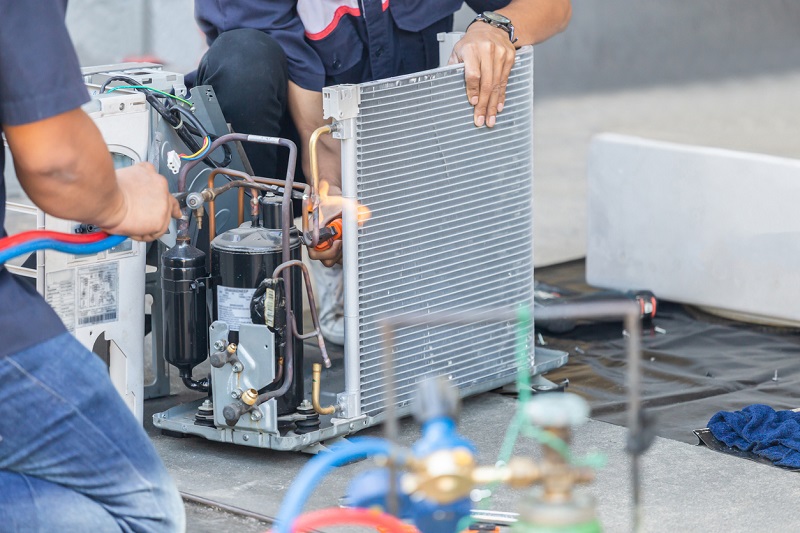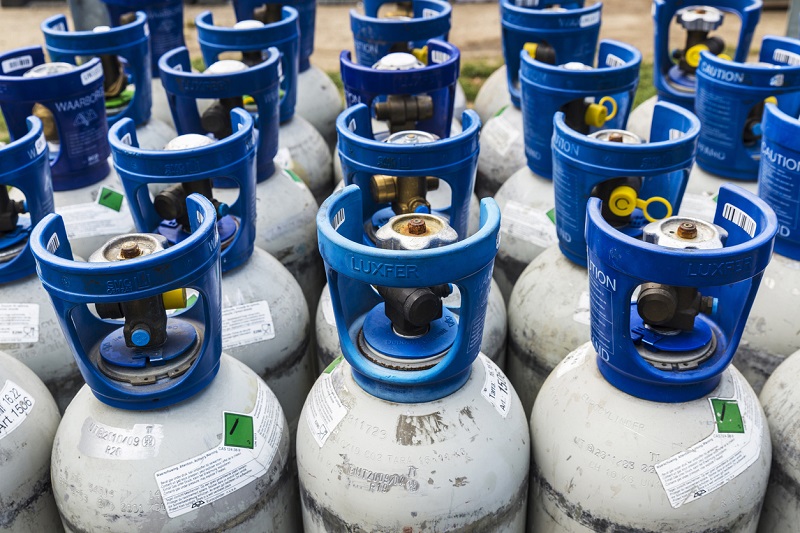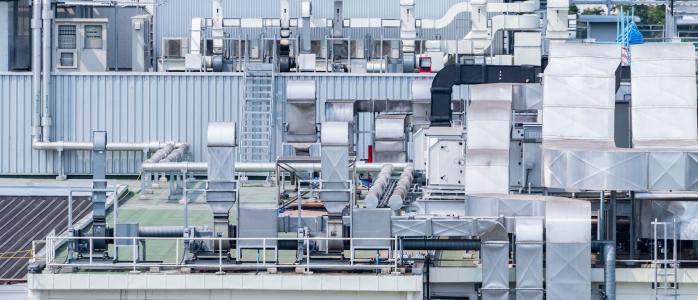



Climate change has precipitated the early arrival of heat waves this year. Even the Himalayan states of Himachal Pradesh and Uttarakhand were not spared, as India experienced the warmest March since 1901 and the highest rainfall deficit since 1909. In its sixth assessment report, the International Panel on Climate Change (IPCC) warned of increased frequency and intensity of heat waves across the globe, if the surface temperatures of the planet breach the 1.5°C threshold. Longer summers as a result of global warming, coupled with increasing incomes are expected to trigger substantial increase in demand for cooling appliances, particularly room air conditioners.
But could our enhanced cooling needs further heat up the planet and trigger extreme climate events such as heat waves?
The cooling sector is considered a large source of both direct and indirect emissions of potent greenhouse gases (GHGs) such as Hydrofluorocarbons. With India’s AC stock set to grow by nearly 40 times to 1 billion units by 2050, it is expected to account for nearly 25 per cent of global emissions emanating from room ACs. India’s cabinet approval to ratify the Kigali Amendment to the Montreal Protocol mandates a phasing down of potent Hydrofluorocarbon emissions in the coming years, specifically from the cooling industry. So, here are five steps consumers and policymakers could follow to reconcile the competing priorities of cooling without warming the planet.

First, adopting good AC-use practices could reduce the carbon footprint of ACs, as well as our electricity bills. We could reduce the load on ACs by ensuring that heat sources in the indoor space are plugged, either by drawing the curtains, closing the doors and windows, or ensuring that other sources such as gas stoves are not in use. By running our ACs at 24 degrees celsius or above, we can save up to 6% of the power consumed with every one-degree rise in the AC temperature. Regular servicing of the ACs is also an extremely effective practice, which can help maintain 95 per cent of the unit’s original efficiency and avoid up to 50 per cent fall in AC performance. In addition, good servicing practices will ensure that harmful refrigerants are not released into the air. A simple practice of cleaning the air filters, at regular intervals, could yield up to 15 per cent energy savings.
Second, develop a robust recycling ecosystem around the cooling sector. On the consumer’s end, they must dispose off used or dysfunctional ACs and their refrigerants only to authorised e-waste recyclers. This could create a circular economy around this sector. Even with the E-waste management guidelines in place, 80 per cent of discarded electronic appliances end up in the municipal landfill and hazardous substances like refrigerants are vented into the air. The Central Pollution Control Board (CPCB), in coordination with the Ozone Cell, should make strict rules for the proper handling, recovery, and reuse of air conditioners and refrigerators. This will ensure that discarded ACs and refrigerants are safely transported to a formal e-waste recycling and dismantling facility. There is a further need for investments to be made in refrigerant disposal technologies and the suitable infrastructures required for its collection, storage, transportation and disposal.

Third, affordable financing options should be provided to consumers to encourage purchase of energy-efficient ACs or super-efficient ACs provided by Energy Efficiency Services Limited (EESL), a public sector unit. On the supply side, the government can send correct market signals and reduce prices by prioritising bulk purchases of natural refrigerant-based highly energy-efficient ACs through green procurement programs. Another low-hanging fruit to encourage the production of sustainable cooling devices is by providing greater incentives to producers of natural refrigerant-based ACs under the Production-linked incentive (PLI) scheme. The government could also consider replicating the UJALA model of on-bill financing to push consumers towards high star-rated or natural refrigerant-based ACs.
Finally, consumers must also be nudged to prioritise purchasing energy-efficient air conditioners (ACs). A CEEW study has shown that while over 71 per cent of AC buyers intend to purchase an energy-efficient or high star rated AC, only 14 per cent end up buying one due to high upfront payment. The gap between awareness and purchase can be bridged through improvements in customer understanding about the lifetime savings from reduced energy consumption and enhanced cooling efficacy. Retailers of electronic appliances could play an important role in educating customers. The Bureau of Energy Efficiency has already trained over 7,500 retailers about the importance and savings of energy-efficient appliances, under the National Retailers Programme.
India, now, stands at the cusp of a sustainable cooling transition. If well managed, this transition could offer multiple opportunities for the cooling industry, boost economic growth, and save our ecology. Timely policy intervention, however, will be the key to ensuring that this demand boom amidst rising temperatures is met through climate-friendly refrigerants, energy-efficient appliances, and clean electricity grids.
Bhuvan Ravindran and Aditya Garg are Research Analysts and Shikha Bhasin is a Senior Programme Lead at the Council on Energy, Environment and Water (CEEW), an independent not-for-profit policy research institution. Send your comments to [email protected].






Add new comment